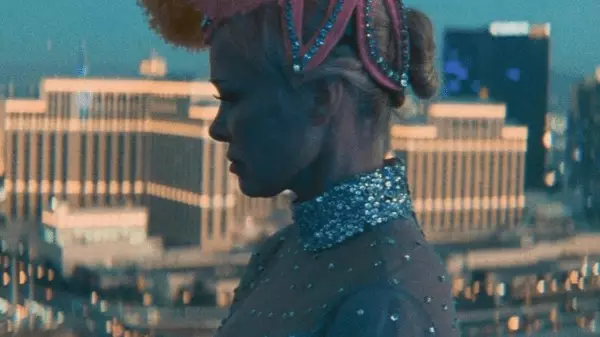The impending release of Pamela Anderson’s new film, *The Last Showgirl*, marks a significant milestone in the actress’s career, heralding her long-anticipated return to the big screen. Under the direction of Gia Coppola, known for her insightful cinematic storytelling, this role offers Anderson a chance to transport audiences into the emotional landscape of a woman navigating the complexities of life and fading fame. With the backdrop of the Las Vegas entertainment scene, Anderson embodies Shelley, a dancer whose life is turned upside down when her show is abruptly canceled after nearly four decades. This film not only reinvigorates Anderson’s career but positions her as a poignant figure against the backdrop of Hollywood’s shifting cultural norms.
Coppola’s creative vision draws interesting comparisons between Anderson and legendary icons like Marilyn Monroe, reinforcing the timeless struggle of women in the entertainment industry. Coppola articulated her inspiration derived from actresses of the past, illustrating how their challenges resonate with contemporary stories, particularly through Anderson’s portrayal of Shelley. By suggesting that Anderson embodies a modern-day Monroe, Coppola highlights the enduring allure and tragedy of their experiences. Both actresses have encountered public scrutiny and personal hardships while navigating the complicated terrain of fame, making Anderson’s role a poignant reflection of historical patterns in Hollywood.
In an engaging exploration of self-identity, Anderson’s character, Shelley, confronts the realities of aging in an industry that often sidelines older actresses. The film tackles profound themes of motherhood, relationship dynamics, and the quest for authenticity. Anderson herself expressed a deep connection to the character, acknowledging the multiple layers that define her narrative—much like her own life. By allowing audiences to witness Shelley’s struggles as she attempts to reconnect with her daughter and reclaim her artistic voice, the film promises a deeper exploration of the human experience.
Throughout her career, Anderson has often been perceived through a narrow lens—one that focuses primarily on the surface-level qualities that made her a household name. However, with *The Last Showgirl*, both Anderson and Coppola aim to shatter that superficiality and delve into the soul of a woman shaped by her experiences. Anderson’s reflection on her career underscores a yearning to reveal a more profound, relatable narrative. It speaks to a broader conversation about the importance of authenticity in acting and storytelling—a theme that resonates deeply with both the creators and the audience.
As Anderson steps back into the limelight, her return is not just about reviving her career but also about contributing to a critical discourse on female representation in film. By inviting audiences to experience Shelley’s journey, *The Last Showgirl* becomes a platform for highlighting the complexities of womanhood, ambition, and resilience. Anderson’s nuanced portrayal, in conjunction with Coppola’s direction, not only honors the legacies of past icons but also sets the stage for a more inclusive and profound understanding of female narratives in today’s cinematic landscape.


Leave a Reply